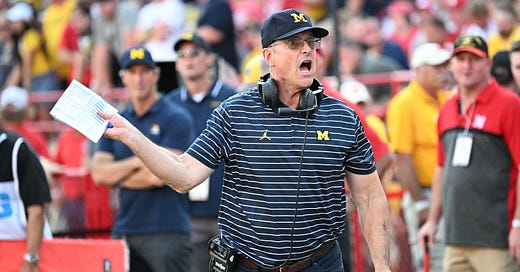Why The Michigan Sign Stealing Investigation Will Lead To Better Technology Across College Football
Huddle Up is a 3x weekly newsletter that breaks down the business and money behind sports. If you are not already a subscriber, sign up and join 100,000+ others who receive it directly in their inbox each week.


